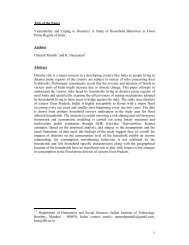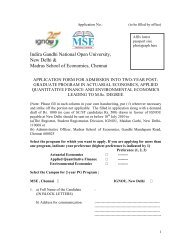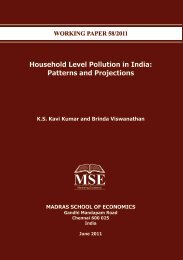Accounting for India's Forest Wealth - Madras School of Economics
Accounting for India's Forest Wealth - Madras School of Economics
Accounting for India's Forest Wealth - Madras School of Economics
- No tags were found...
You also want an ePaper? Increase the reach of your titles
YUMPU automatically turns print PDFs into web optimized ePapers that Google loves.
4. THE GST: THREE VERSIONSThe basic idea <strong>of</strong> GST is to adhere closely to the principle <strong>of</strong> acomprehensive value added tax. Three versions <strong>of</strong> GST are currentlyunder Discussion suggested respectively by the Empowered Committee<strong>of</strong> State Finance Ministers, Task Force <strong>of</strong> the Thirteenth FinanceCommission (which we may use as reference point as the 13 FC makesreference to it) and the Model GST <strong>of</strong> the Thirteenth FinanceCommission. In all three cases, the GST has two parts: central GST(CGST) and State GST (SGST). With a view to highlighting the similaritiesand differences between these proposals, we look at the following sixaspects <strong>of</strong> GST proposed by these models. These are: (a) broadstructure, (b) central and state taxes to be merged in GST (c) treatment<strong>of</strong> inter-state sales, (d) rate structure, (e) threshold limits, and (f) place<strong>of</strong> environmental taxes.Broad StructureThe broad structure <strong>of</strong> the GST is similar in all the three models. The GSTconsists <strong>of</strong> a central and state GST components (CGST and SGST) withthe following main features:i. The basic features <strong>of</strong> law such as chargeability, definition <strong>of</strong>taxable event and taxable person, measure <strong>of</strong> levy includingvaluation provisions, basis <strong>of</strong> classification etc. should beuni<strong>for</strong>m across these statutes as far as practicable.ii.The CGST and SGST would be applicable to all transactions <strong>of</strong>goods and services made <strong>for</strong> a consideration except <strong>for</strong> theexempted goods and services, goods which are outside thepurview <strong>of</strong> GST and the transactions which are below theprescribed threshold limits.iii. The CGST and SGST are to be paid to the accounts <strong>of</strong> theCentre and the States separately. Taxes paid against the CGST16


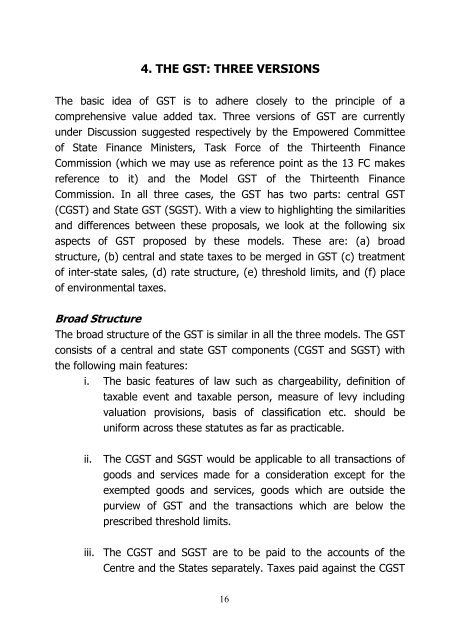
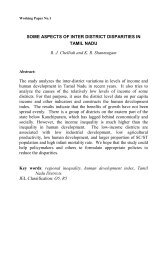
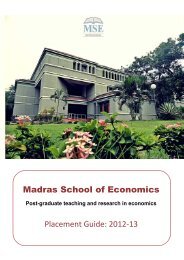
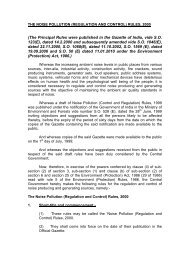
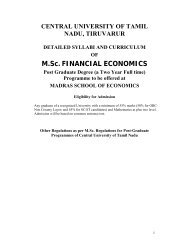
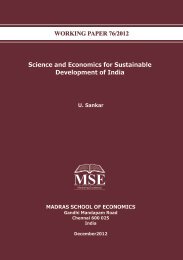
![Curriculum Vitae [pdf] - Madras School of Economics](https://img.yumpu.com/49878970/1/190x245/curriculum-vitae-pdf-madras-school-of-economics.jpg?quality=85)
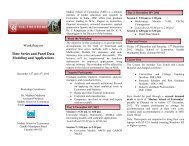
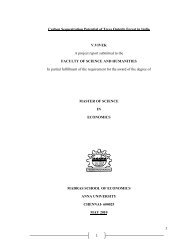
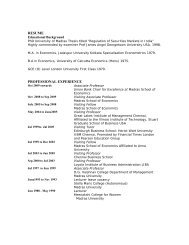
![Curriculum Vitae [pdf] - Madras School of Economics](https://img.yumpu.com/48715201/1/184x260/curriculum-vitae-pdf-madras-school-of-economics.jpg?quality=85)
